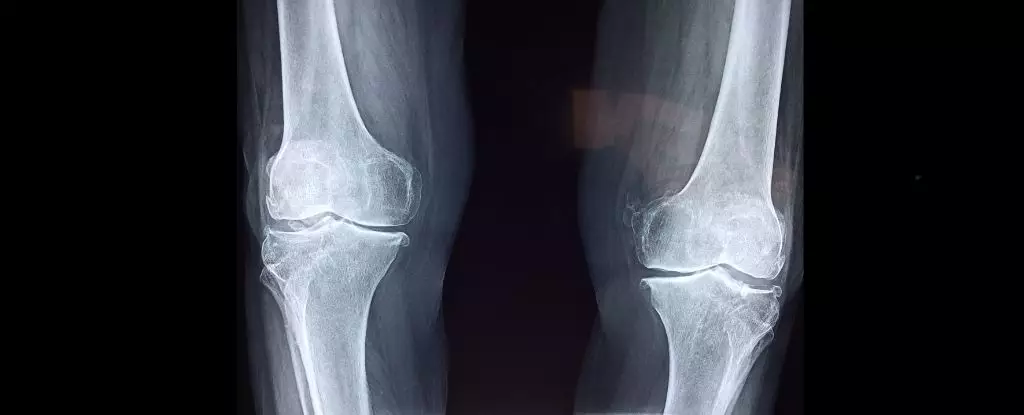Osteoporosis, often referred to as a “silent disease,” quietly deteriorates bone health without presenting obvious symptoms until a fracture occurs. This condition is characterized by diminished bone density, making bones weak and susceptible to breaking. Although osteoporosis can affect individuals of all ages, it primarily impacts older populations, with over 10 million Americans currently diagnosed and an additional 43 million suffering from low bone mass which can pave the way for developing the disease. As outlined by health authorities, the incidence of osteoporosis is projected to surge by over 30% by 2030, impacted by a combination of aging demographics and lifestyle choices that warrant immediate attention.
The implications of osteoporosis are alarming, with an astounding 9 million fractures occurring worldwide each year due to its effects, signaling a fracture every three seconds. The most common fractures are observed in the hips, wrists, and spine, often resulting from minor falls or bumps. Such fractures can instigate a series of health complications, including chronic pain, hospitalization, disability, and psychological ramifications such as depression. Alarmingly, the risk of mortality increases with the onset of fractures. Recognition of early warning signs is vital, as these fractures may be the first markers indicating weakened bone structure.
The gradual loss of height, often underreported, is another subtle indicator of osteoporosis. Individuals with multiple spinal fractures can experience a significant height reduction—more than what is considered typical with aging. A hunching of the back, or kyphosis, serves as a visible sign of declining spino-vertebral integrity, often accompanied by persistent back pain. Recognizing these indicators is crucial for early intervention and management.
The rising prevalence of osteoporosis can be traced to a myriad of lifestyle choices. Societal shifts toward increased sedentary behavior, smoking, alcohol consumption, and nutritional deficiencies have contributed significantly to weakened bones. Notably, dietary factors play a critical role in bone health. Calcium and vitamin D are pivotal in ensuring stronger bones: while calcium fortifies bone structure, vitamin D enhances the absorption of calcium.
For optimal bone health, adults, particularly women over 50 and men over 70, should aim for a minimum daily intake of 1,200 mg of calcium. Dairy products such as milk, yogurt, and cheese present an accessible source of this essential mineral. However, for individuals adhering to a vegan diet, many plant-based sources including leafy greens, almonds, and fortified foods can provide sufficient calcium. Regular transparency in dietary intake and understanding one’s nutritional needs are essential steps toward prevention.
In addition to dietary adjustments, regular physical activity proves to be a powerful component in the prevention of osteoporosis. Engaging in weight-bearing exercises, such as walking or dancing, significantly enhances bone density. Furthermore, strength training offers dual benefits, promoting bone health while enhancing overall stability and flexibility, potentially decreasing the likelihood of falls that lead to fractures.
Experts recommend a regime of at least 30 minutes of weight-bearing activities on most days, coupled with muscle-strengthening exercises twice a week. Particularly for women, exercising pre-menopause lays the groundwork for longevity in bone health. It is equally crucial to avoid detrimental habits such as smoking and excessive alcohol consumption, which can further compromise bone integrity.
Preventative measures must be complemented by regular screenings to effectively monitor bone health. Medical guidelines suggest that women begin osteoporosis screenings at age 65, while men should assess their risk earlier based on individual factors such as medical history and lifestyle choices. A simple bone density scan can provide vital information regarding bone strength, while spinal X-rays can identify compression fractures.
Recognizing osteoporosis in its nascent stages and committing to lifestyle changes is foundational in managing the disease. Since osteoporosis cannot be entirely cured, a long-term commitment to health choices is paramount. This includes a balanced diet, regular exercise, and routine medical evaluations to forge a path toward a healthier future devoid of the burdens associated with this silent epidemic.
Through awareness and informed action, individuals can combat the challenges of osteoporosis and promote a life marked by mobility, vitality, and bone health. Understanding the nuances of this condition is not just beneficial; it is essential for fostering resilience against a largely preventable disease.

